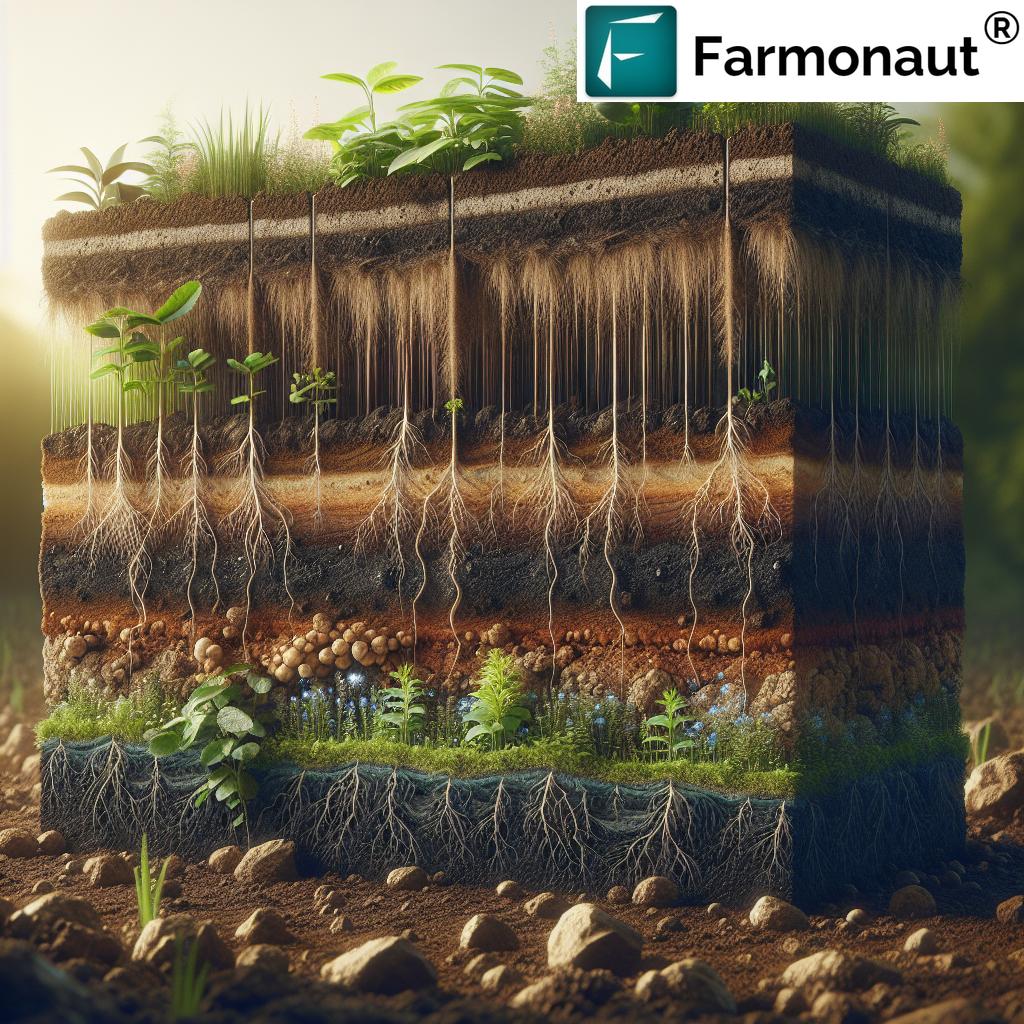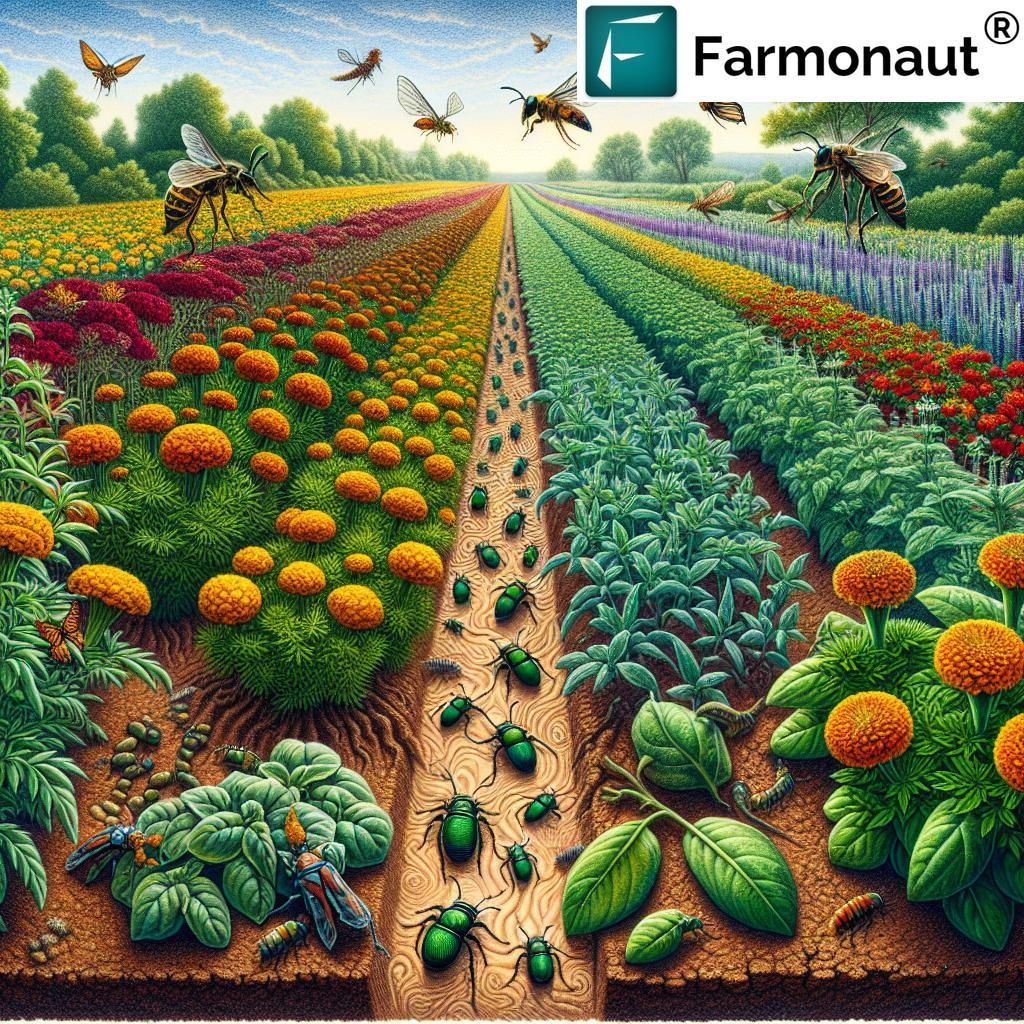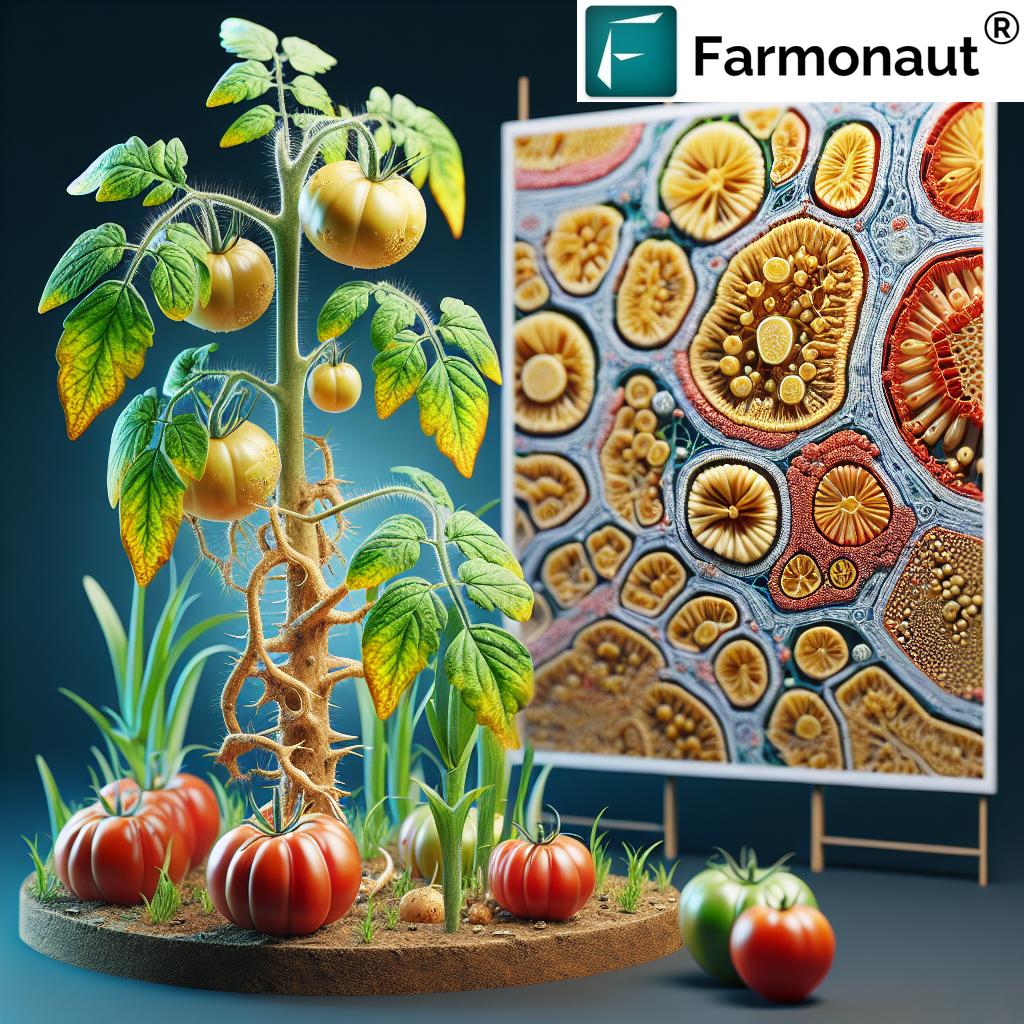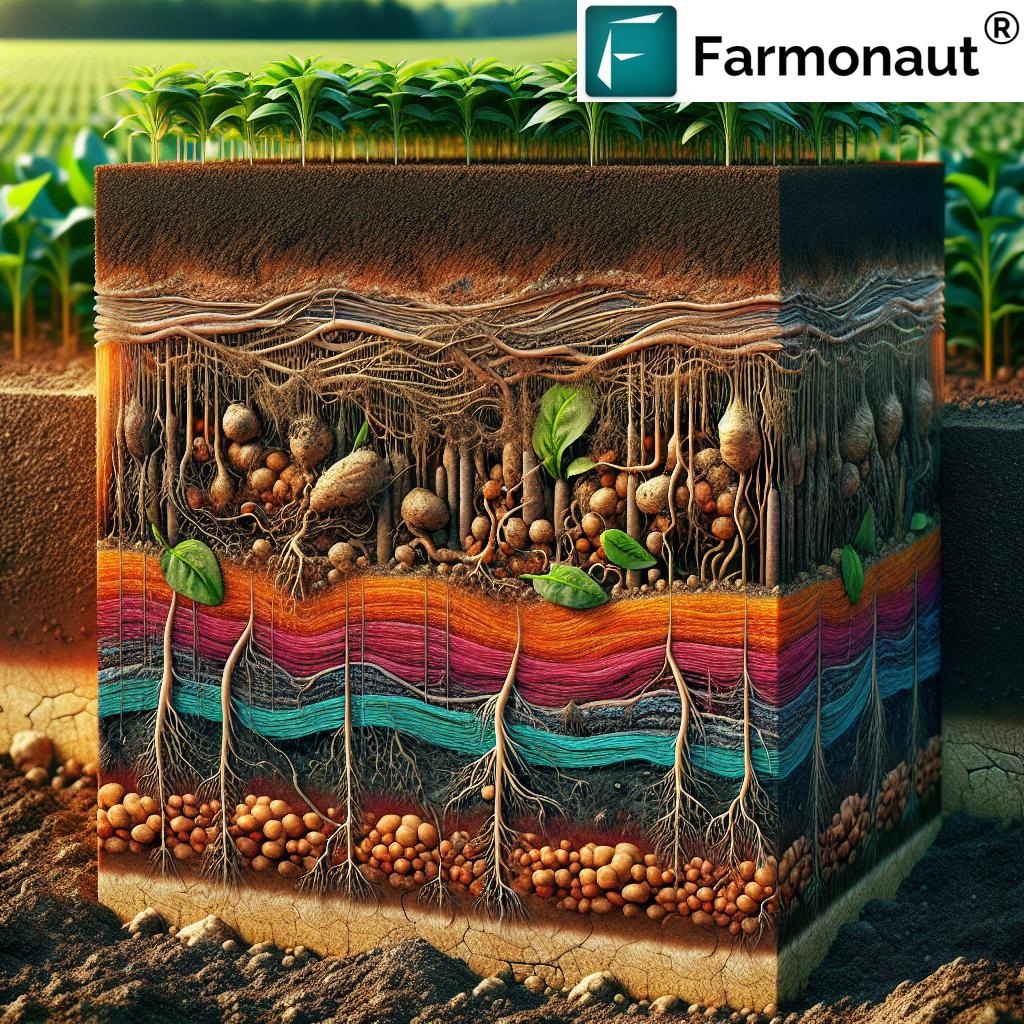Environmentally Sustainable Agriculture: 7 Key Benefits
” Sustainable farming can reduce chemical pesticide use by up to 90%, protecting soil and water quality. ”
What Is Environmentally Sustainable Agriculture?
As we confront the demands of a rapidly changing world—from population growth to pressing climate shifts—the concept of environmentally sustainable agriculture has emerged as a crucial approach to providing reliable food supplies while preserving natural resources for future generations. This system balances productivity with ecosystem health, ensuring that our farming practices produce food without compromising the long-term health of the environment or communities.
A type of organic farming that focuses on creating a sustainable environment is called agriculture. This approach emphasizes natural processes, avoids synthetic fertilizers and pesticides, and promotes practices that enhance soil fertility, support biodiversity, and conserve water resources.
Why Is Environmentally Sustainable Agriculture So Important in 2025?
- Global population is rising, putting unprecedented pressure on agricultural systems and natural resources.
- Climate change poses risks to crops and ecosystems, requiring resilient and adaptive farming methods.
- Resource conservation—particularly water—is now critical as more regions suffer from droughts and scarcity.
- Chemical pollution from industrial agriculture has begun to impact human health and environmental stability.
- Biodiversity loss threatens the productivity and resilience of agricultural landscapes.
The core principle of environmentally sustainable agriculture is to meet today’s food needs without endangering the ability of future generations to meet their own demands.
Organic Farming in the Sustainable Ecosystem
Organic farming stands out as a leading model for environmentally sustainable agriculture in the modern agricultural ecosystem. But what are the defining traits that set organic agriculture apart from conventional operations, and how does it support a sustainable environment?
What Is Organic Farming?
Organic farming is defined as an agricultural system that avoids synthetic fertilizers, pesticides, genetically modified organisms (GMOs), and focuses on natural processes to enhance soil fertility and pest control. Essentially, it encourages working with nature rather than against it, using biological methods for soil enrichment, pest management, and nutrient cycling.
- No synthetic fertilizers or pesticides – instead, organic farmers rely on compost, green manure, and biopesticides.
- No GMOs – organic standards prohibit the use of genetically engineered seeds or crops.
- Emphasis on soil health – practices like cover cropping, crop rotation, and mulching boost soil fertility naturally.
- Fostering biodiversity – diversified crop rotations and habitats for beneficial insects help support ecological balance.
- Conserving water – organic farms use techniques like drip irrigation to minimize water usage.
Benefits of Organic Farming on the Environment
The benefits of organic farming on the environment are widely recognized and extensively studied:
- Reduces chemical inputs, keeping soil and water free from dangerous pollutants.
- Improves soil health by increasing organic matter and boosting microbial diversity.
- Supports biodiversity, benefiting pollinators and other wildlife.
- Enhances ecosystem resilience against climate extremes and pests.
Among the various farming practices, organic farming stands out as a type of environmentally sustainable agriculture that emphasizes creating a balanced ecosystem, reducing chemical inputs, and fostering biodiversity.
Controlled Environment Agriculture (CEA): Types and Technology
Controlled Environment Agriculture (CEA) represents the forefront of innovation in advancing sustainable agriculture for 2025 and the future. By giving farmers full control over growing conditions, CEA maximizes resource efficiency and minimizes environmental impacts.
- CEA includes technologies such as greenhouses, vertical farms, and hydroponics—each allows for precise management of factors like light, temperature, humidity, and nutrients.
- It not only improves yields but also dramatically reduces resource use, especially water and energy.
- CEA is rapidly expanding in urban settings and regions prone to adverse weather or soil degradation.
Types of Controlled Environment Agriculture
-
Greenhouse Farming:
Utilizing enclosed structures to protect crops from adverse weather, optimize light and temperature, and enable year-round production. -
Vertical Farming:
Growing crops in vertically stacked layers, often in urban settings, saving land and water. -
Hydroponics and Aquaponics:
Soilless cultivation methods where plants grow in nutrient-rich water solutions (hydroponics) or in symbiosis with aquatic animals (aquaponics).
Adoption of organic farming within these controlled environments further enhances sustainability by reducing reliance on chemical inputs and conserving natural resources.
Key Technologies Powering CEA in 2025
- Monitoring Systems: CEA uses sensors for real-time management of temperature, humidity, and light. This allows for optimal growth conditions and resource conservation.
- AI & Data Analysis: Artificial Intelligence models help predict nutrient needs, detect disease outbreaks, and optimize crop planning.
- Water Recycling: Closed-loop systems recapture and reuse water, making CEA highly water efficient.
Controlled environment agriculture uses up to 95% less water than traditional farming, conserving vital natural resources. - LED Lighting: Enables crop growth even in areas with limited sunlight, lowers energy consumption, and increases yields.
” Controlled environment agriculture uses up to 95% less water than traditional farming, conserving vital natural resources. ”
7 Key Benefits of Environmentally Sustainable Agriculture
Let’s delve into the seven most significant benefits of environmentally sustainable agriculture—from improved soil health to boosting ecosystem resilience.
-
1. Reduced Chemical Use
Environmentally sustainable agriculture and particularly organic farming avoid synthetic fertilizers, pesticides, and herbicides. By doing so, these systems dramatically reduce chemical runoff into soils, rivers, and aquatic ecosystems, helping mitigate water pollution and deliver substantial health benefits to people and wildlife alike.
Benefits of organic farming on the environment in terms of chemical reduction are clear: reports show a reduction of up to 80-90% in pesticide use compared to conventional agriculture. -
2. Resource Conservation
Conserving natural resources is central to sustainable farming. **Controlled environment agriculture**—from hydroponics and vertical farms to greenhouse methods—uses up to 95% less water by recycling and minimizing waste. Efficient energy and nutrient management in these controlled environments also contribute to lower environmental impacts and resource savings.
-
3. Enhanced Biodiversity
Sustainable and organic agriculture practices encourage greater biodiversity. This fosters resilience, supports pollinators, and maintains ecological balance. Diverse crop rotations, hedgerows, intercropping, and wildlife-friendly management increase both above- and below-ground biodiversity, strengthening the entire food web.
-
4. Improved Soil Health
Sustainable systems are designed to create healthy, living soils. Practices like composting, reduced tillage, and cover cropping boost soil fertility, retain moisture, and prevent erosion. Healthy soils sequester more carbon, support beneficial microbes, and increase long-term productivity—delivering both climate and agricultural benefits.
-
5. Lower Carbon Footprint
By reducing fossil-fuel-dependent chemical inputs and promoting natural processes, organic and controlled environment agriculture release less greenhouse gases. Climate-smart agriculture and carbon farming techniques help offset emissions and can play a vital role in global carbon change mitigation.
-
6. Water Efficiency
Closed-loop irrigation, advanced moisture sensors, and soil management methods allow sustainable farms to maximize every drop of water. This is essential as water scarcity becomes an increasing threat—CEA approaches can save as much as 95% more water than traditional methods.
-
7. Improved Ecosystem Resilience
Environmentally sustainable practices make agriculture less vulnerable to shocks from pests, diseases, and extreme weather. By focusing on ecosystem health, farmers can adapt to climate change, safeguard pollinators, and foster systems that recover quickly from disturbances.
Benefits Comparison Table
| Benefit | Description | Estimated Impact/Value |
|---|---|---|
| Reduced Chemical Use | Avoids synthetic fertilizers/pesticides, less chemical runoff and pollution | Reduces chemical pesticide use by up to 90% |
| Resource Conservation | Efficient use of water, energy, and nutrients, especially in CEA | Water usage lowered by approximately 30–95% |
| Enhanced Biodiversity | Supports a wide range of plants, insects, and animals for resilient ecosystems | Increases on-farm biodiversity by up to 50% |
| Improved Soil Health | Boosts organic matter, microbial activity, and nutrient cycling | Increases soil organic matter by ~30% over 5 years |
| Lower Carbon Footprint | Reduces greenhouse gas emissions and promotes carbon sequestration | Cuts emissions by up to 40% per unit food produced |
| Water Efficiency | Uses advanced irrigation and recycling to save water | Improves water-use efficiency by up to 95% |
| Improved Ecosystem Resilience | Strengthens ecosystems against pests, diseases, and climate extremes | Enhances recovery from climate shocks by 25–50% |
Environmental Impact of Sustainable Agriculture in 2025
Environmental impact of sustainable agriculture goes beyond reduced chemicals or water use. In 2025, with rising climate volatility, sustainable systems offer vital ecological and social returns:
-
Contribution to Climate Change Mitigation: By promoting soil carbon sequestration, reducing emissions via less synthetic input use, and adopting carbon farming practices, sustainable agriculture acts as a net carbon sink.
Want to measure your farm’s carbon footprint? With Farmonaut’s Carbon Footprinting Solution, you can track, manage, and reduce emissions using satellite intelligence. - Reduction of Water Pollution: Sustainable and organic farms help keep rivers and waterways cleaner by limiting runoff from fertilizers and pesticides.
- Soil Restoration: Conservation tillage and cover crops help restore soil structure and fertility, reversing decades of degradation.
- Biodiversity Hotspots: Diverse crop choices and natural habitats on sustainable farms support wildlife corridors and genetic diversity.
- Community & Food Security: Localized, resilient food systems are better equipped to deliver healthy food and provide rural livelihoods.
Organic Farming, CEA, and Ecosystem Health
The integration of organic farming methods with controlled environment agriculture platforms (like vertical farming, hydroponics, and greenhouse farming) represents a powerful approach to promoting ecosystem health on a local and global scale.
- Organic greenhouse and vertical farm systems combine the resource-use efficiency of CEA with natural, chemical-free inputs to maximize both productivity and health of soils, plants, and surrounding life.
- Hydroponics and aquaponics offer soilless, high-yield systems that further conserve water and avoid the problems of contaminated agricultural land—while aquaponics promotes a closed-loop symbiosis between aquatic animals and plants.
- Rotational cropping and interplanting, common in organic and sustainable systems, provide food and habitat for native pollinators, beneficial insects, and birds.
The Role of Natural Inputs in Crop Protection
- Biological pest control using beneficial fungi, bacteria, or insects.
- Organic sprays derived from plant oils, minerals, or microbial extracts.
- Cultural practices such as crop rotation and healthy soil management that break pest cycles.
By replacing synthetic inputs with natural, ecosystem-friendly methods, farmers can further promote ecosystem health and achieve robust, sustainable yields.
Farmonaut’s Role in Promoting Environmental Sustainability
As 2025 approaches, data-driven insights are revolutionizing how farmers and managers implement sustainable agricultural practices. At Farmonaut, we are dedicated to enabling the global transition to more environmentally sustainable agriculture using advanced satellite technology, AI, and blockchain solutions.
-
Satellite Crop and Soil Monitoring: Our platform uses multispectral imagery to analyze soil health, crop vigor, and vegetation indices (NDVI, etc.). This enables efficient, targeted interventions that conserve resources and enhance productivity.
Manage and monitor your farm at any scale with our Large-Scale Farm Management Tools. - AI Advisory with Jeevn: Our AI-driven advisory system provides real-time insights on weather, pest outbreaks, and optimal input use for sustainable farming.
-
Blockchain-Based Traceability: Ensuring total transparency and food authenticity throughout the supply chain.
Explore how traceability supports organic and sustainable certification, boosting trust and consumer confidence. - Environmental Impact Monitoring: Real-time tracking of carbon footprint, water usage, and emissions for compliance and sustainability goals.
-
Fleet and Resource Management: Our tools help optimize logistics for agriculture, reducing operational costs, fuel use, and environmental impact.
Discover more on Farmonaut’s Fleet Management for efficient field and equipment operations. -
Supporting Farmers’ Access to Credit: Satellite-based verification supports financial institutions in offering crop loans and insurance.
Learn about Crop Loans and Insurance—making finance accessible for sustainable farming transitions.
Getting Started with Sustainable Agriculture Tools
Transitioning to sustainable, organic, or CEA-based systems requires information, technological support, and strategic planning. Our satellite-powered solutions at Farmonaut make monitoring and management of environmental impacts accessible—whether you manage a small organic farm or a large-scale resource-intensive operation.
Integrate satellite monitoring, AI-driven advisories, and blockchain traceability to support your sustainable agriculture journey today.
- To unlock advanced capabilities—such as real-time carbon and soil monitoring, resource usage analytics, and blockchain documentation—visit our API platform or explore our developer documentation.
- For those involved in reforestation or ecosystem restoration: see our Crop/Plantation and Forest Advisory for support on sustainable land management.
The future of food, farming, and the environment depends on our ability to innovate sustainably, promote biodiversity, and align with the changing world. By adopting sustainable agricultural practices and leveraging leading-edge technology, we are building a better future for generations to come.
Frequently Asked Questions (FAQ)
What is a type of organic farming that focuses on creating a sustainable environment?
A type of organic farming that focuses on creating a sustainable environment is called agriculture. These systems emphasize soil fertility, minimizing chemical use, protecting biodiversity, and ensuring resource conservation.
Which types of controlled environment agriculture (CEA) are most popular today?
The most common types of CEA are greenhouse farming (enclosed structures that protect crops and optimize light/temperature), vertical farming (upright stacks or towers for intensive land use), and hydroponics/aquaponics (soilless growing systems using nutrient solutions or fish-plant symbiosis).
How do the benefits of organic farming on the environment compare to conventional farming?
Organic farming reduces chemical inputs, improves soil health, boosts biodiversity, and increases water efficiency compared to chemical-intensive agriculture. It also helps sequester carbon, mitigate pollution, and support ecosystem resilience.
What is the environmental impact of sustainable agriculture?
The environmental impact of sustainable agriculture is broadly positive: it reduces emissions, conserves water and soil, limits pollution, increases biodiversity, and strengthens ecosystem health and resilience.
Can technology accelerate adoption of sustainable principles on my farm?
Absolutely. Satellite data, AI predictive tools, and blockchain tracking (like those from Farmonaut) give farmers the insights needed for precise, resource-efficient, and transparent management—all while supporting sustainability goals.
In summary:
Environmentally sustainable agriculture combines the principles of organic farming and controlled environment agriculture (CEA) to dramatically reduce chemical inputs, conserve water and other resources, and promote biodiversity and ecosystem health. Technology leaders like Farmonaut make it possible to implement advanced, data-driven sustainable practices at any scale—helping farmers, governments, and businesses produce food without sacrificing ecological integrity. As global demands rise and environmental challenges grow, these sustainable solutions will be essential for meeting the needs of present and future generations.
















